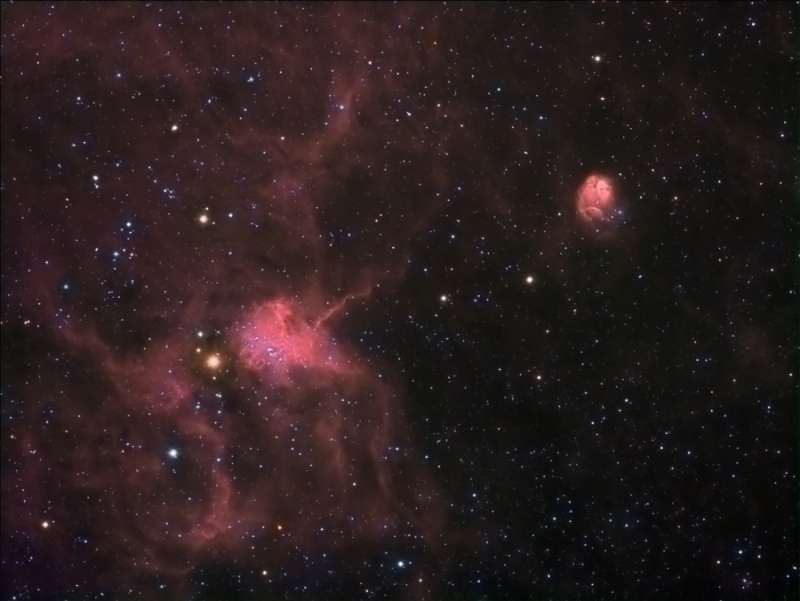Credit & Copyright: Troy Tsounis
Explanation:
Bright clusters and nebulae abound in the ancient northern
constellation of
Auriga.
The region
includes the open star cluster
M38, emission nebula
IC 410 with
Tadpoles, Auriga's own
Flaming Star Nebula IC 405, and
this interesting pair
IC 417 (lower left) and NGC 1931.
An imaginative eye toward the expansive
IC 417
and diminutive
NGC 1931
suggests a cosmic
spider and fly.
About 10,000 light-years distant,
both represent young, open star clusters formed in interstellar
clouds and still embedded in
glowing hydrogen gas.
For scale, the more compact NGC 1931 is about 10 light-years across.
Note:
An APOD editor will review great space images on Thursday, January 14, in
Houghton, Michigan.
1999 2000 2001 2002 2003 2004 2005 2006 2007 2008 2009 2010 2011 2012 2013 2014 2015 2016 2017 2018 2019 2020 2021 2022 2023 2024 2025 |
Январь Февраль Март Апрель Май Июнь Июль Август Сентябрь Октябрь Ноябрь Декабрь |
NASA Web Site Statements, Warnings, and Disclaimers
NASA Official: Jay Norris. Specific rights apply.
A service of: LHEA at NASA / GSFC
& Michigan Tech. U.
|
Публикации с ключевыми словами:
open cluster - emission nebula - Рассеянное скопление - эмиссионная туманность
Публикации со словами: open cluster - emission nebula - Рассеянное скопление - эмиссионная туманность | |
См. также:
Все публикации на ту же тему >> | |
Мнение читателя [1]
